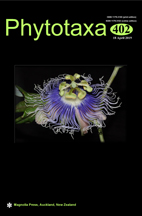Abstract
Upretia squamulosa is described as new to science from the arid valley of Jinsha-jiang River, China. It is characterized by a squamulose thallus, greyish green to brown upper surface, lecanorine apothecia, and by containing gyrophoric and lecanoric acids. The other species in the genus, U. amarkantakana, differs from the new species by the crustose to subsquamulose thallus with lobate margin and the absence of gyrophoric and lecanoric acids. A phylogenetic tree based on nrITS for Upretia and related genera in the subfamily Caloplacoideae is established to assess the affinities of the new species.

